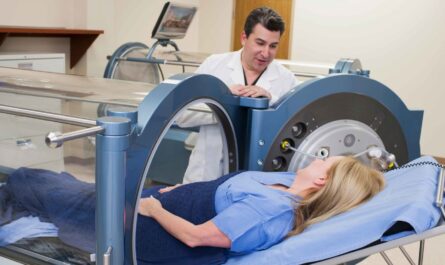
What is Impingement Syndrome?
Impingement syndrome is a common cause of shoulder pain that occurs when soft tissues like tendons between the humerus (upper arm bone) and acromion (part of the shoulder blade) become compressed or “pinched.” This pinching happens when the arm is raised overhead or behind the back.
Causes of Impingement Syndrome
There are a few factors that can cause the structures around the shoulder joint to get pinched:
– Bone Spurs: Bone spurs, also called osteophytes, are bony projections that can form on the acromion. Spurs develop over time from repetitive overhead motions and serve to further narrow the space for tendons and other soft tissues.
– Rotator Cuff Tears: Partial or full-thickness tears of the rotator cuff tendons are a common cause of impingement. Damaged tendons have difficulty gliding smoothly under the acromion during arm movement.
– Poor Shoulder Mechanics: Improper posture, weak surrounding muscles, or anatomic variations that alter shoulder mechanics can all lead to impingement over time from overuse.
Common Signs and Symptoms
The hallmark sign of impingement syndrome is shoulder pain that worsens with overhead activities or motions behind the back like combing hair or putting on a coat. Other common symptoms include:
– Pain that wakes the individual at night if lying on the affected shoulder
– Stiffness and difficulty raising the arm fully after rest
– Pain radiating down the arm for more severe cases
– Tenderness over the front or top of the shoulder
– Loss of strength with resisted arm motions
Diagnosis and Testing
Doctors will first ask about medical history and perform a physical exam to isolate impingement as the source of shoulder discomfort. Diagnostic tests may include:
– X-rays to check for bone spurs or arthritis
– MRI scans to evaluate the rotator cuff muscles and tendons
– Ultrasound to show tendon abnormalities
– Arthroscopy for a close-up look at internal shoulder structures
Treatment Options for Impingement Syndrome
Conservative treatment is usually tried first for impingement syndrome and focuses on decreasing inflammation and pain. This may include:
– Non-steroidal anti-inflammatory drugs (NSAIDs)
– Corticosteroid injections for short-term relief
– Physical therapy for stretches and strengthening
– Activity modification like avoiding aggravating movements
If conservative measures fail to provide relief after 3-6 months, surgical options are considered. Arthroscopic shoulder surgery can successfully treat impingement in 80-90% of cases by shaving down bone spurs or repairing torn structures. Full recovery may take 4-6 months after surgery.
Long-Term Management
It’s important to keep overhead stresses on the shoulder to a minimum even after pain and inflammation subside. Proper shoulder strengthening exercises should be maintained over the long-term, especially for those prone to re-injury. Activities that require arms constantly above head level are best limited or swapped for lower-stress alternatives whenever possible.
With proper treatment and lifestyle modifications, most patients can effectively manage impingement syndrome symptoms and return to normal shoulder function. Recurrence is possible though with further overuse over time. Consulting an orthopedist for follow up assessments is recommended for long-term shoulder health.
*Note:
1. Source: Coherent Market Insights, Public sources, Desk research
2. We have leveraged AI tools to mine information and compile


